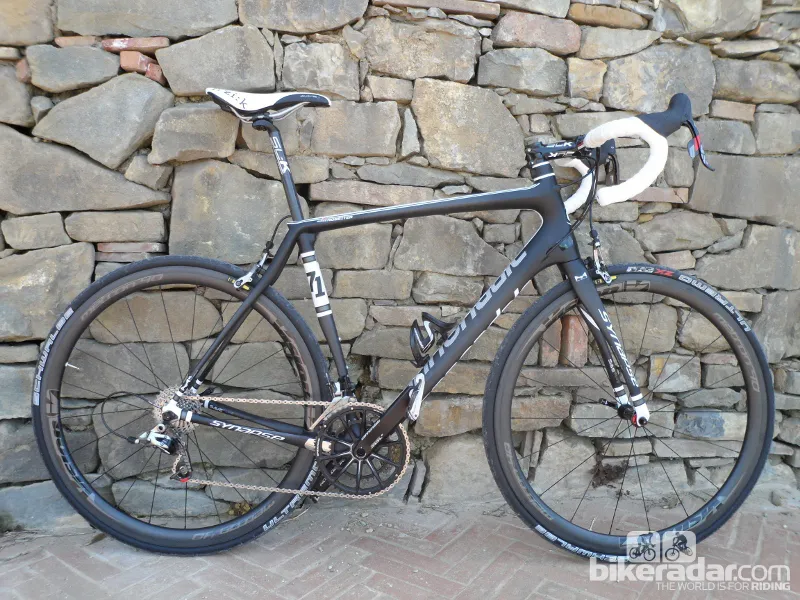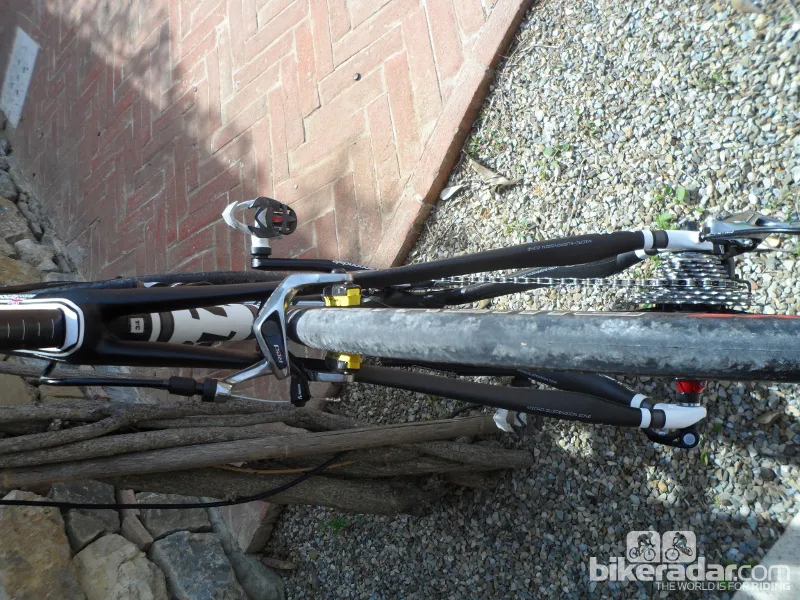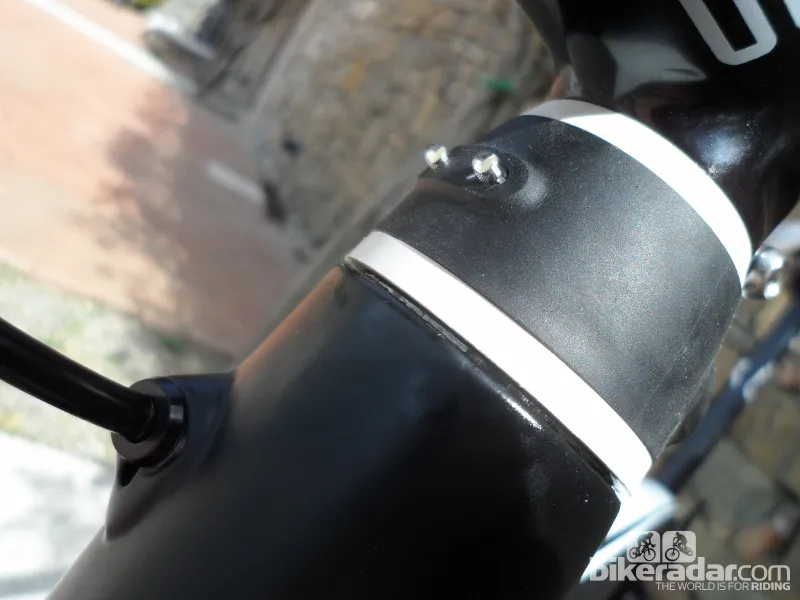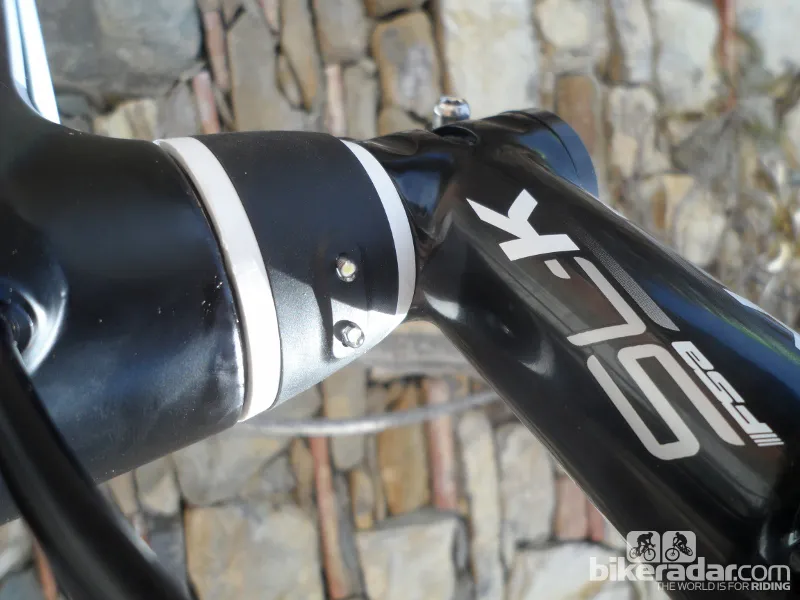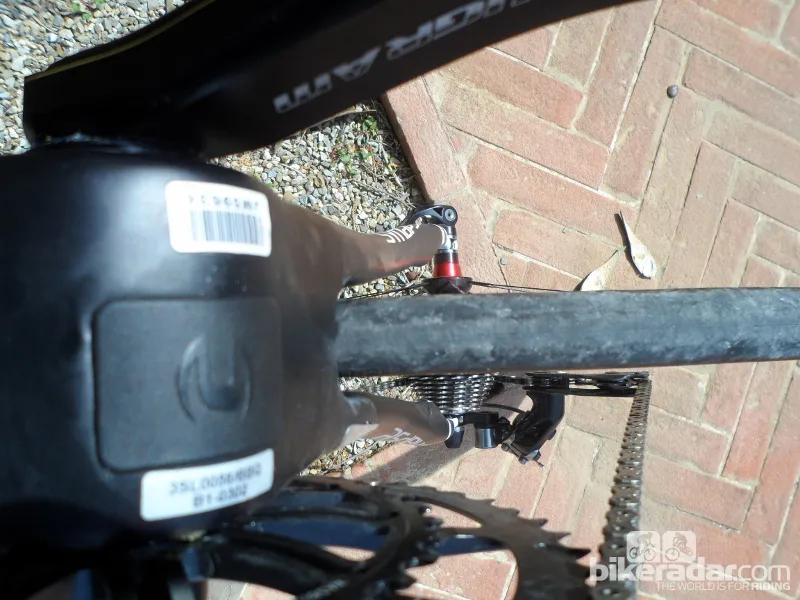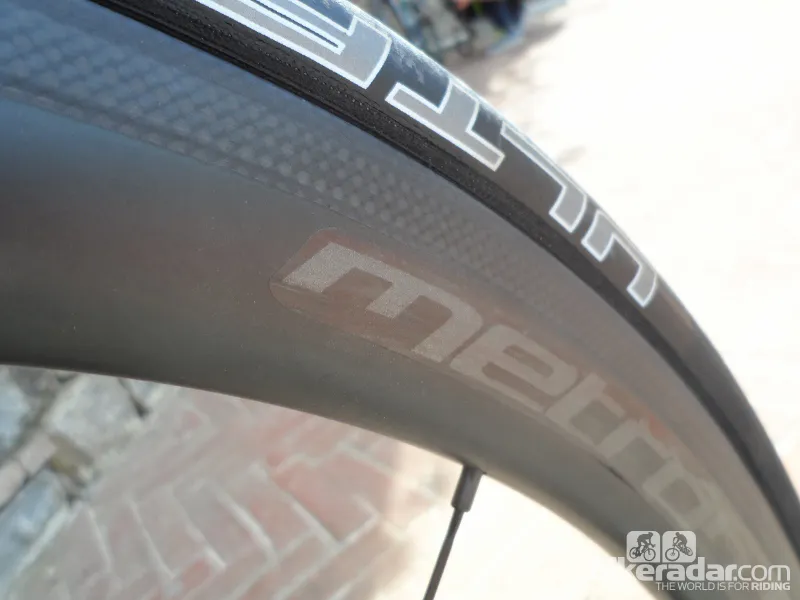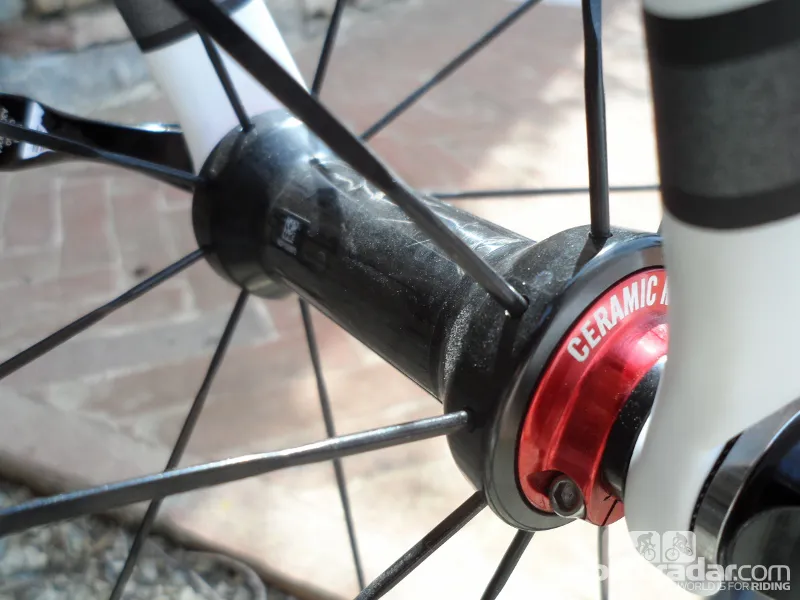The all-new Cannondale Synapse Hi-Mod, a race version of which has been used to great effect by Peter Sagan in the recent spring classics, is the US company's latest road bike, designed with an emphasis on comfort and performance.
For Cannondale's latest iteration of their endurance focused Synapse, they’ve taken elements of a highly successful predecessor and used knowledge and tech gained from the SuperSix EVO lightweight race machine.
The Synapse wasn’t Cannondale’s first foray into the world of rider-focused road bkes. Back in 2002, while the CAAD range of alloy road bikes was getting more and more aggressive by being longer, lower, and stiffer, they introduced a bike named the Road Warrior, with a shorter reach and taller head tube to relax the position.
This evolved into the original Synapse, which retained the more relaxed position and added to the comfort by using Cannondale’s SAVE (Synapse Active Vibration Elimination) tube shaping and material manipulation. This allowed high-frequency vibrations from coarse road surfaces to be reduced, resulting in a combination of relaxed ride position and smooth rolling.
Design aims
For the latest Synapse, Cannondale have been back to the conception stage – the explosion of the gran fondo and sportive scenes has meant the requirements for a non-pro bike have changed.
They believe that a relaxed position is still key, but that the bike must handle well, and be reactive and light. The hardcore enthusiast, as opposed to a racer, still needs the same priorities from a bike, just in a different order.
Erik Eagleman, chief industrial designer for the Synapse project and originator of the EVO, Slice RS and Jekyll mountain bike, explained: “Racers want lightness and sharp handling, and an efficient position. Comfort is apprieciated but not at the compromise of anything else. An endurance rider, we feel, puts comfort and handling above all else. So that’s comfort, handling, position efficiency, lightness.

The rear exit cable routing and minimal dropouts are reminiscent of the EVO
“If you think of the SuperSix EVO as a Formula 1 car, then our new Synapse is a Maserati GranTurismo. It combines elements of beauty with real world performance.”
While the new Synapse contains plenty of radical new touches and engineering firsts, it still manages to retain some of the character of the original. The seat tube still having the silhouette shape of the rear wheel cut in, the pinched-in-the-middle seatstays, and arch of the fork all hint at the previous design, while the slender nature of the tubes reflects what Cannondale have learned from the EVO project.
Eagleman led the aesthetic and performance side of the design process, while chief design engineer Chris Dodman took on the job of implementing the radical changes. The central goals of the new Synapse were to improve drivetrain stiffness while enabling a better level of compliance, all wrapped up in a lighter (sub kilo) frame.
This involved implementing carbon layup and engineering solutions both obvious to the eye and under the skin, and Cannondale claim they’ve hit the sweet spot with the end result.
SERG technology
The company have always been keen on buzzwords and anacronyms with their tech, so we expected one or two for the new bike. The first is SERG, which stands for Synapse Endurance Race Geometry. It means the Synapse has got a little more aggressive, the frame shape now sitting squarely between the racy EVO and the previous Synapse.
To be honest, it’s what we expected to see on a reworking of the platform, as we’ve already seen Specialized race-up the Roubaix with the SL4, Giant hit the sweet spot with the Defy Advanced, and Trek have success with the H2 fit on both the Domane and Madone.
BallisTec Carbon
The SuperSix EVO saw Cannondale debut the BallisTec Carbon on the road, and Chris Dodman explained the reasons why this tougher-than-standard material was chosen for the new Synapse:
“This is our proprietary carbon construction. By utilising a material that was originally used in military armour, at the fiber base we’ve got an excellent strength to weight ratio. The use of both UHM (Ultra Hi-Mod) and HM (Hi-Mod) fibres means we can, in combination with the layup, precisely tune the stiffness through a network of stiffening fibres where we need it.
“By optimising the layup schedule we can ‘scrub out’ high frequency vibrations. Because, unlike the EVO, weight wasn’t our number one priority we could use more layers in our layups."
This has also supposedly led to extra durability, which has enabled Cannondale to give the frame a lifetime warranty.

The asymmetrically split seat tube is a first for Cannondale
SAVE
The next buzzword is SAVE .
SAVE technology (what they call Micro-Suspension) has been around on Cannondales for a while, and is achieved through carbon fibre layup orientation, designed to maximise the inter-lamination shear dissipation.
Under stress, different layers of a laminate will be moving constantly. If the orientation of the fibres is different (as is very likely) they will be working against each other, with only the bond of the resin holding them together. In a worst-case scenario that can lead to cracks, delamination and, ultimately, failure of the structure.
Cannondale’s BallisTec combination of resin and fibres combats this potential problem. This frame marks the first time they’ve looked at layup over stiffness to see how the laminates can be used to create comfort.
Shapes such as the helix to the seatstays increase the length of the fibres, and that helps decrease the amount of high-frequency vibration getting through to the rider.
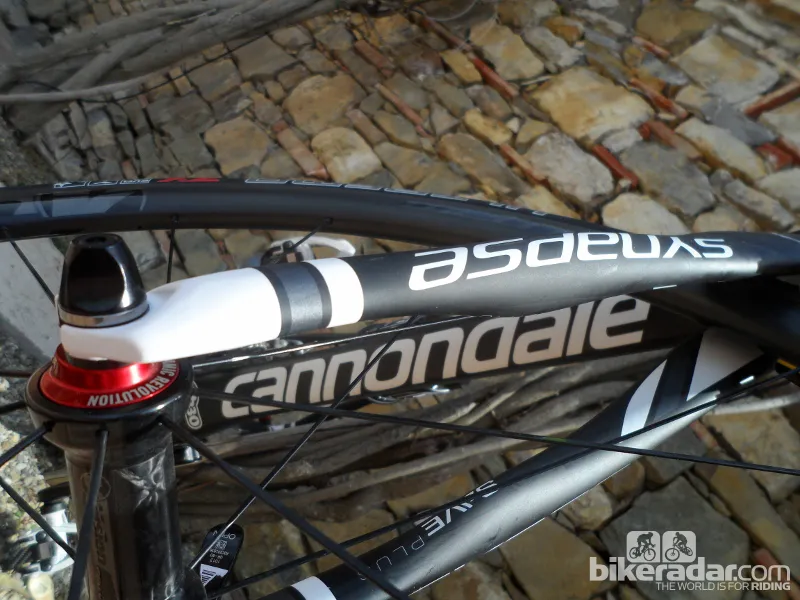
The fork legs bear a similar helical design to the seatstays
The fork and stays have been designed to work in unison, combined at the back with the helix-shaped seatstays and slimmer-than-usual chainstays. These pinch and flatten at the midpoint, between BB shell and dropout, and it’s this horizontally flattened part that’s designed to allow flex.
Up front, the fork’s offset dropout means it has a greater effective length and rake, which adds smoothness but retains the handling traits. The legs themselves have a slightly helical profile, like the rear stays, and are broader at the crown and dropouts, slimming through the mid-section to allow for some flex fore-and-aft.
It’s these key features that Cannondale claim give them the advantage over their competition, as the vibration reduction works whether you’re in the saddle or standing (though when standing you are using your arms and legs as suspension).
The new seatpost, from partners FSA, has been designed around a super-slim 25.4mm diameter, compared to a standard 27.2mm or oversized 31.8mm model. This means it can flex more than a standard post.
The new collarless clamp design also increases the amount of the post that can flex (6.5cm for a 56cm frame), and Cannondale claim a 113 percent greater deflection than with a 27.2mm diameter post at 100kg (220lb).

The hidden seat clamp design
Those versed in bike history will recall the 25.4mm standard seatpost diameter of steel bikes of the 60s. So Cinelli, 3T and Campagnolo, dig out those old tube moulds – it looks as though 25.4 is making a comeback!
Power Pyramid seat tube
From race photos and spy shots, the most intriguing thing about the new Synapse is what Cannondale are calling the Power Pyramid, a term resurrected from their oversized tapered alloy frame designs but applied to the radical seat tube design.
The twin tube design came about after the company tested the original wide-based, single tube design. They found that the front and rear sections of material were doing very little to enhance stiffness, and claim that by taking the same amount of material and splitting it into two ‘legs’ they’ve made the structure much more stable.
The design is asymmetric, with the split offset at its base. It’s designed to work with an evolution of the BB30 standard, named BB30a. Designed by Dodman (who also designed the original BB30 and Hollowgram chainset), it improves bottom bracket stiffness by relying on shape and optimised use of materials.
With BB30a, the shell is widened from 68mm to 73mm to increase stiffness but give a balanced heel clearance of 10mm each side (BB30 offers 10mm and 15mm). Plus, with Cannondale’s Hollowgram chainset, or FSA’s Cannondale-specific models, it retains the same Q factor.
It’s also meant an increase inn chainstay width, and that allows a much wider tyre to be fitted.
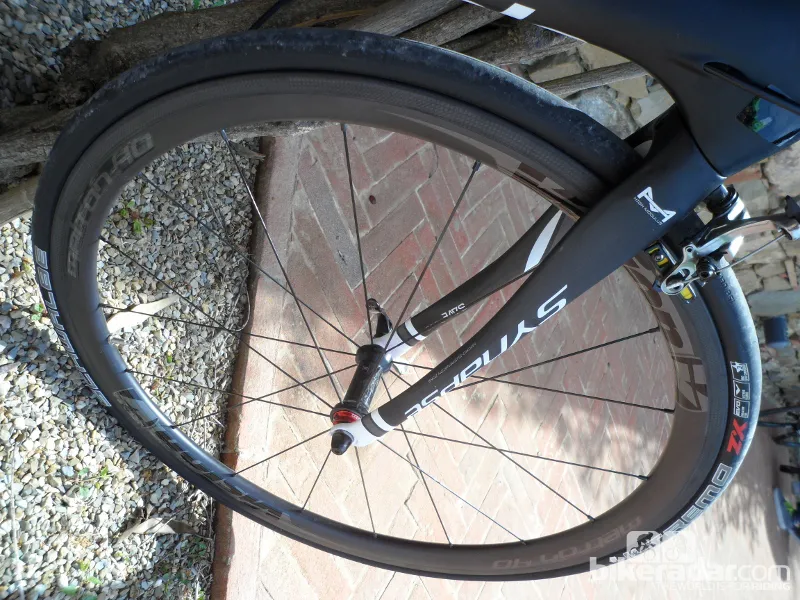
Vision's all-new Metron clincher
Sizing and pricing
Cannondale will offer the new Synapse in no fewer than 11 sizes when you include the women’s specific models. With each model being optimised in terms of layup, construction, reach and fork rake, each frame size is unique, with no shared sections.
The pricing for a single mould wasn’t confirmed, although mooted to be around the price of the aforementioned Maserati, so make no mistake – this is one seriously expensive frameset to construct. The development process (estimated at a total of eight years of man hours) means it’s been a pricy project to complete.
Testing
We’re yet to get out on the new Synapse to see how it rides, but initial feedback from Cannondale team riders has been good.
Peter Sagan admits he didn’t want to ride the new Synapse Hi-Mod over his beloved SuperSix EVO, but after testing it over the Strade Bianche and cobbles it’s now his frame of choice for the Classics. Victory at Ghent and a podium at Flanders suggests it’s doing something right.
BikeRadar will have more information and a first ride coming over the next few days, so watch this space. For more information on Cannondale products see www.cannondale.com.
